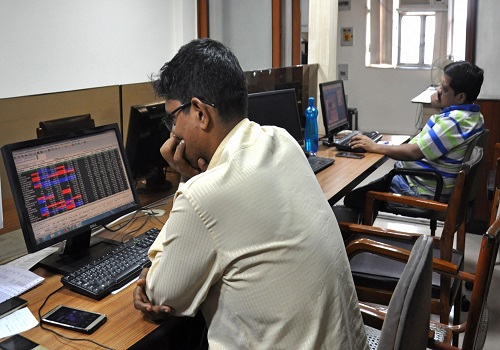Growth continues to surprise on the upside by HDFC Mutual Fund

As per the quarterly GDP numbers released last week, Indian economy grew at 8.4% in real terms (i.e. growth after adjusting for inflation) in Q2FY24. This growth was higher than expectations set by economists, and is partly explained by reduced government subsidies. Nevertheless, momentum in economic growth continues to be strong and corroborates the narrative – high growth is being led by increasing capital expenditure and government spend, along with a pick-up in the manufacturing sector. Higher GDP growth bodes well for corporate profits, and equity markets.
The popularly tracked figure, the GDP, can be explained in terms of Consumption, Investment, Government Expenditure and Net Exports. An industry level production estimate is found within the GVA (Gross Value Added) which is broken down into Agriculture, Industry and Services. The difference in GVA and GDP is Net taxes: GVA Plus Net Taxes (Indirect taxes less subsidies) = GDP.
In Q3FY24, GDP growth was 8.4% while GVA growth came in at 6.5%. This shows that a large part of the GDP jump came in because of increase in indirect tax collection and reduction in subsidies in the current quarter. In total, net indirect taxes grew 32% YoY in Q3FY24. Because of high tax buoyancy (read more in our Chartscope for Jan 2024), GDP has been reporting higher growth in the past 3 years. Going forward, with reducing pace of subsidy reductions, this difference could narrow as per analysts’ estimates.
An interesting phenomenon of the Indian statistical system is that the government also reports advance estimates of the full year GDP. From this, one can impute the GDP for the remaining quarter, i.e. Q4. As per these calculations, the government expects GDP growth to decelerate to 5.9% - a meaningful deceleration. If actual growth is higher, the full year GDP numbers will be revised upwards.
Investments in the economy, measured by Gross Fixed Capital Formation (GFCF), grew at 10.6% in Q3FY24, continuing from 9.5% growth reported in H1FY24, and at 11.0% in Q2FY24. As per the advance estimates, FY24 GFCF is expected to grow at 10.2% YoY. Additionally, while government capex continues to grow at a strong pace, private capex is also seeing turnaround. CMIE data indicates that 85% of new project announcements (in ? terms) in the past 12 months were from the private sector. Capex reported by listed corporates has grown sharply.
Continuing its trend from late FY23, FY24 has also seen weak private consumption growth, with FY24 growth in private consumption being just 3%. Consumption has multiple factors in its favour for higher growth going forward, such as improving rural wages, expectations of a better crop harvest, decreased inflation, along with positive indicators of urban demand like increased vehicle sales and lower risk of El-Nino for the year.
Among sectors, Manufacturing recorded a second consecutive quarter of high growth, at 11.6% in Q3FY24 on a relatively lower base. In fact, it is encouraging to see momentum continue, with January and February manufacturing PMI (Purchasing Manager’s Index) at 56.5 and 56.9 respectively, indicating expansion over the previous months. In the long term, the relocation of Global supply chain towards India and ASEAN countries (China +1) indicate acceleration.
Construction has also been reporting high growth (10.7% YoY in FY24), a corollary to higher GFCF. With expectations of continued government capex and pick up in private capex, outlook for this sector remains positive. While Indian Equity Markets are hitting fresh all-time highs, it is pertinent to note that other indicators such as the nominal GDP, corporate earnings, are also hitting all-time highs. While GDP growth has been high, profits as a % of GDP have been increasing.
Higher than expected growth in FY24 so far has improved the outlook towards economic growth for India, with several analysts mentioning upgrades / potential upgrades to FY24 and FY25 GDP growth estimates. RBI expectations for FY25 GDP growth currently stand at 7%, higher than IMF expectations of 6.5%. With the world undergoing a growth slowdown, India may find it difficult to sustain high levels of growth. Near term risks include global headwinds from continued higher interest rates, evolving geopolitical developments, crude oil prices, and the potential impact of El Nino (which has reducing probability).
Above views are of the author and not of the website kindly read disclaimer























